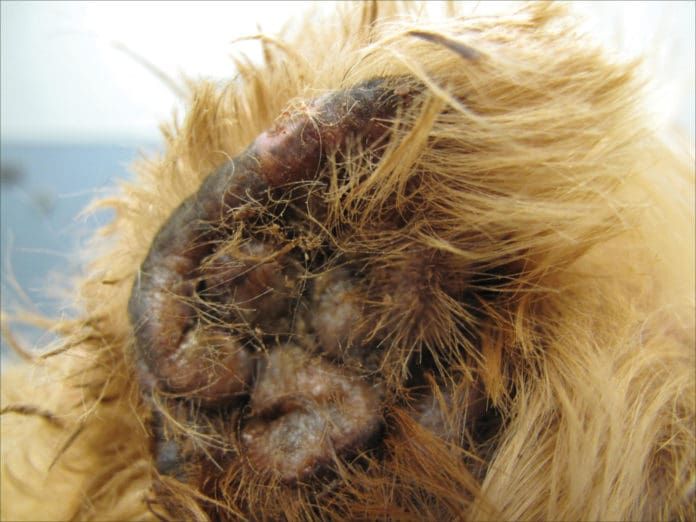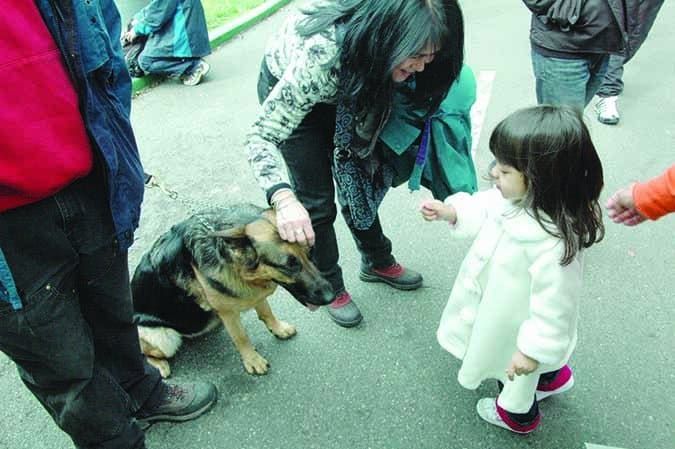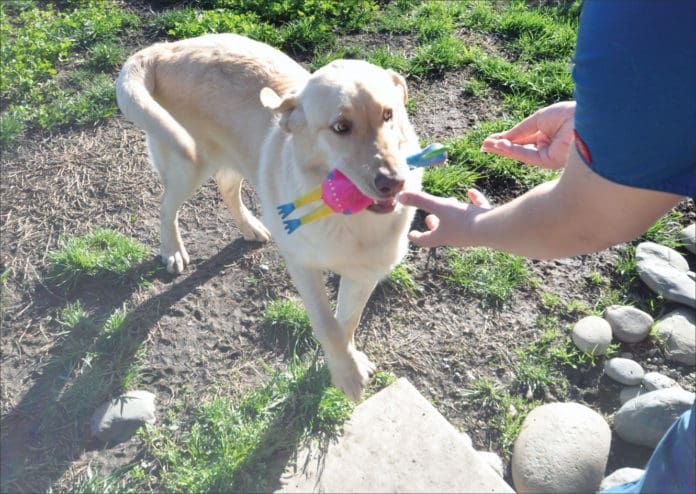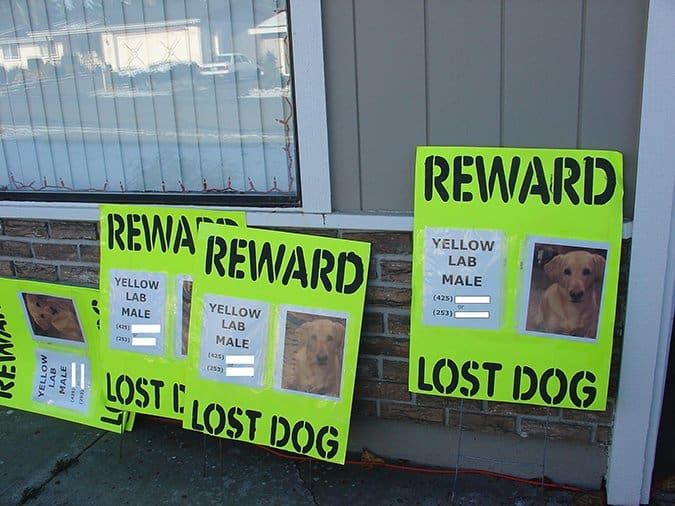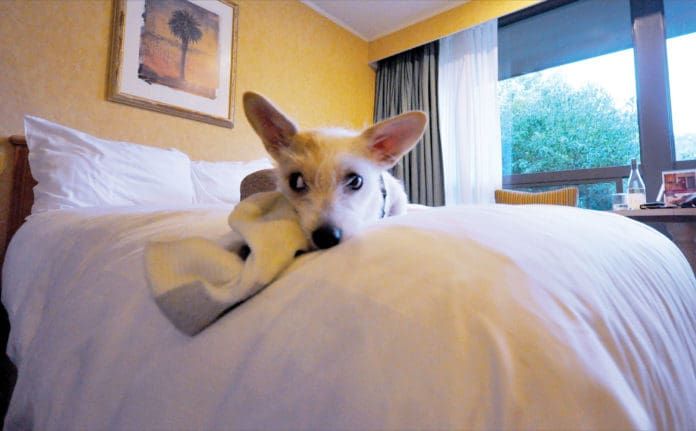Severe and/or recurrent ear infections cause more than chronic discomfort or even maddening acute pain for your dog; inadequately or belatedly treated, they can cause total deafness. I once helped transport a rescued Bouvier who had suffered such serious chronic infections that she required a total ear canal ablation (TECA, a procedure in which the entire middle ear canal is surgically removed). While such operations are usually a last-resort effort to both reduce the dogs suffering and preserve the dogs inner ear (hearing organ) and ability to hear, in this case, the damage from her many past infections was already done and she was completely deaf.
While such drastic measures may occasionally be indicated for dealing with long-standing ear infections, taking a proactive approach to your dogs ear health may save her from the need for radical treatment.
Signs of Trouble
If your dog frequently shakes her head, scratches at her head or ears, rubs her head along the carpet or furniture, sits with her head cocked to one side, or whines while doing any of the above, odds are that she has or is developing an ear infection. You may also see some redness at the opening of the ear, sometimes extending outward into the pinna (ear flap).
Normally, a dogs ear has very little or no discharge, and what little you may observe is a beige/yellow waxy substance. In an infected ear, you may find anything from dry black stuff (usually associated with ear mites) to brown waxy discharge (normal, yeast, or bacterial) to pus (bacterial).
An infection brings inflammation to the area, as the body attempts to flood the infected tissue with pathogen-fighting agents and flush pathogens and damaged cells away. But inflammation is always a double-edged sword, for it also can cause pain as the tissue swells. This is never more true than when the swelling is inside the ear canal already a small, sensitive space. As the tissue inside the ear swells, the dogs hearing may be diminished, and his balance may be affected, too. Chronic inflammation can lead to ulceration, scarring, calcification, and even rupture of the ear drum.
The pain and irritation may cause him to shake his head and claw at the ear, damaging the tissue even further and causing even more swelling. Head-shaking and scratching can also cause blood vessels in the flap of the ear to burst, causing the ear flap to swell like a balloon. This very painful condition, known as an ear hematoma, requires immediate veterinary attention. If left untreated, it can cause permanent disfigurement of the ear flap. Chronic ear pain can also cause the dog to develop behavioral issues; he may grow increasingly cranky in general and specifically defensive about being touched on the head so much so that he reflexively snaps at and bites an unsuspecting person who pats his head or fondles his sore ear.
Its imperative to get ear infections cleared up as soon as possible and not expect them to resolve on their own.
At the Vet
Heading to your veterinarian for help with an ear infection is always a good idea, especially if you havent had previous experience with a canine ear infection and you arent certain what it looks like, or if a previously treated infection has recurred. If you are going to take your dog to the vet, dont clean his ears that day; it maybe helpful for the veterinarian to see the appearance and amount of the discharge.
The vet will clean and examine the ears, and usually will take a look deep inside the ear canal with an otoscope that is, if the swelling in the ear canal is not too severe. Some brave veterinarians will also put their noses near the dogs ear and take a quick sniff; the odor of an infected ear is distinctive.
In mild cases, after cleaning the ear well, veterinarians will generally administer and give the owner a topical ear solution containing antibiotic, antifungal, and anti-inflammatory agents. This is typically used for a dogs first or infrequent ear infection because, no matter what the causative organism, this type of topical will address it. In many cases, thats all there is to the ear infection event.
However, if the infection recurs, its likely that the treatment was incomplete, whether because the solution wasnt applied as frequently or as well as required (sometimes the outer ear looks good, but the infection continues to fester deep within the ear canal), or because the infectious organisms developed resistance to the antibiotic in the solution. In these cases, we may wonder why the infection keeps coming back when, in reality, it never ever went away.
When an ear infection recurs (if not before!), culturing a sample of the exudate is a must, to make sure that the next treatment is targeted to treat the specific pathogen. Oral antibiotics may be indicated in such severe cases in addition to topical therapy. Note that oral antibiotics are not the first go-to for a one-off ear infection and are rarely successful as the sole therapy.
Chronic cases may also be helped by a Traditional Chinese Veterinary Medicine (TCVM) approach including acupuncture, and/or when used preventively such as prior to spring/summer if dealing with seasonal allergies. Also, acupuncture and laser therapy can relieve pain associated with infections.
Early Care
Integrative veterinarian Susan Wynn, DVM, CVA, CVCH, AHG, who practices at BluePearl Georgia Veterinary Specialists in Atlanta, believes that learning to identify and detect the earliest stage of infection is a dog owners best shot at preventing a serious infection and the need for veterinary attention. The switch from being normal and comfortable to infected can be subtle and fast; the ears may have no redness and then suddenly develop mild levels of redness and discomfort with minimal discharge.

Infections are usually a secondary problem, says Dr. Wynn. People should be watching for the onset of that primary cause, rather than waiting for infections to develop.
Be vigilant and check your dogs ears regularly; the moment that you notice redness or discharge, you need to clean the ears. Yeast and bacteria are normal inhabitants of a dogs ear in small amounts. A variety of health conditions can cause yeast or bacteria populations to spike; the goal of cleaning is to create an inhospitable environment in the ear for this to occur.
Dr. Wynn likes Zymox Enzymatic Ear Solution, with or without the anti-inflammatory hydrocortisone. (Zymox is available in two formulas: an enzymatic ear cleanser for preventive maintenance, and an enzymatic ear solution for treating mild infections).
Another ear wash that may help prevent infection is Halos Cloud 9 Herbal Ear Wash. It contains a variety of essential oils in a base of witch hazel.

One of my favorite recipes for a cleansing ear wash comes from The Encyclopedia of Natural Pet Care, by WDJ contributor CJ Puotinen. Combine 1/8 teaspoon lavender essential oil with ¾ cup witch hazel, 1 tablespoon powdered boric acid, and ¼ cup aloe vera juice or gel. Shake well before using.
Nancy Kay, DVM, DACVIM, author of Speaking for Spot, has a recipe for a homemade drying agent that involves mixing one part white vinegar, one part water, and one part 70% isopropyl alcohol (avoid the 90% variety). But she cautions that we not use this concoction in our dogs ears before discussing it with a veterinarian. Dr. Wynn concurs; she says she no longer cleans ears with vinegar/water or vinegar/water/alcohol solutions. While inexpensive, the solutions can cause significant pain if the dogs ear canals are ulcerated from chronic inflammation.
Others favor cleansing the ear with a solution containing apple cider vinegar, which is often touted for its infection-fighting properties. As healthy as it may be, please note that this vinegar also stings inflamed tissue.
How often you clean your dogs ears depends on your dog and her lifestyle; for example, dogs who swim regularly may need frequent ear cleaning. But more is not necessarily better; over-cleaning can be too drying and may lead to other problems.
If your dog has very occasional signs of a mild ear infection, cleaning his ears well may stop the infection in its tracks. But if the infection persists or worsens, take your dog to the veterinarian as soon as possible for further investigation.
The Root Cause
In most cases of recurring ear infections, clearing up otitis (inflammation in the ear) is just the start of your work. Figuring out what caused your dog to develop the ear infection is your next assignment.
Far and away, allergies are the most common cause of ear infections. Chronic inflammation, leading to infection as a secondary effect, is most frequently caused by environmental allergies (such as pollen, mold, and dust mites), but food allergies can also cause inflammation. A visit to your veterinarian, or, best yet, a board-certified veterinary dermatologist, will be your best bet for identifying (and then avoiding) the triggers for your dogs recurrent ear infections.
Joel Griffies, DVM, a board-certified veterinary dermatologist (DACVD) who practices at the Animal Dermatology Clinic in Marietta, Georgia, explains that there are four factors involved in ear infections:
Primary: Allergies or diseases causing immunosuppression
Secondary: Bacterial and yeast infections (many people focus on this, but elimination of the bacteria and yeast often results in only temporary relief)
Perpetuating: Related to swelling of the ear (i.e., anatomical changes such as scarring) that accompanies infections
Predisposing: Excess hair in ear canal, pendulous ears, or very long ear canals
Dr. Griffies feels that the role of swimming (water in the ears) in the development of ear infections is exaggerated. Most dogs who get ear infections from swimming already had an ear prone to infections. That bit of water may have just pushed the infection over the edge, he says.
Dr. Wynn emphasizes that its important to understand the cause when choosing a treatment. In the case of allergies, she notes, Most people dont seem to know that the dogs allergies must be controlled to prevent the infections, and that isnt always easy to do. Treating this kind of recurrent infections with conventional or holistic strategies will fail, she says; finding and preventing the cause (rather than the symptoms) of the infection is the only permanent solution.
Dr. Wynn shares a cautionary tale about a client who had a wonderful agility dog who suffered from recurrent ear infections. When herbal/essential oil treatments didnt work well, the client consulted with a homeopath long-distance. Not a veterinarian, and unable to see the dogs ears, the practitioner recommended homeopathic treatments and suggested that the continued inflammation of the ear was essentially okay. Two years later, Dr. Wynn saw the dog again. The dogs ear canals were calcified and the dog had become aggressive due to her constant pain.
The best way to avoid ear infections? Dr. Griffies says, Probably the best answer can be obtained after an ear infection has occurred. Diagnosing and managing the underlying problem that is causing ear infections is the best method. We have many dogs who initially present for chronic otitis, but once their food allergies or environmental allergies are managed, they no longer suffer from recurrent infections.


